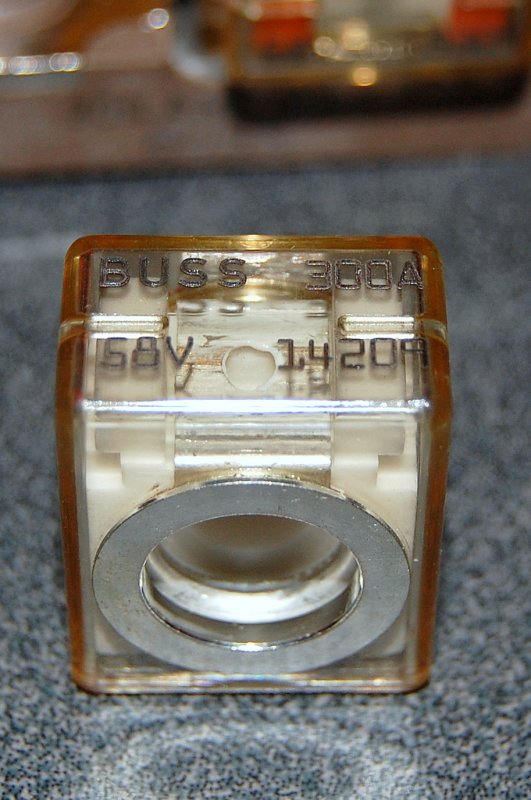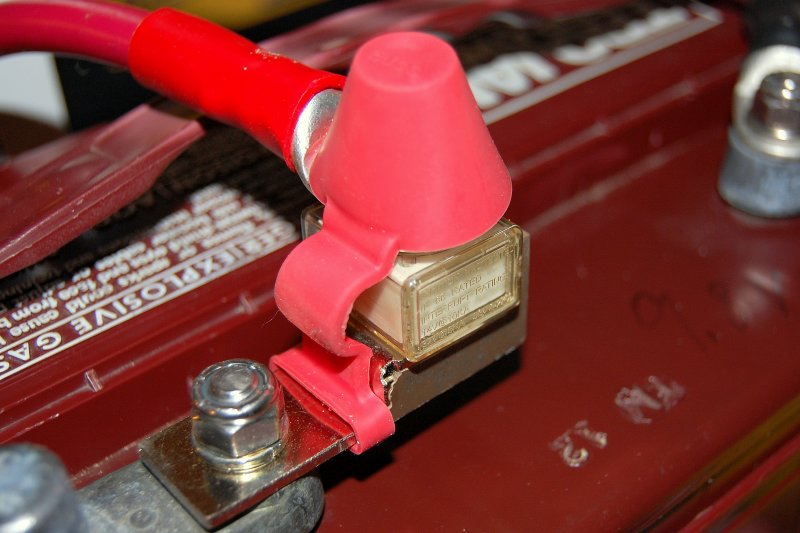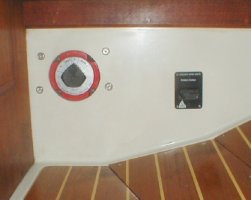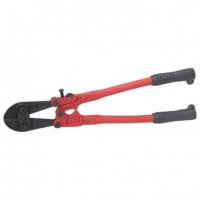Thanks Loren..
Here's the text so folks don't need to click away from here.
I don't think many folks are aware of the Blue Seas MRBF fuses so I thought I post about them. The "Marine Rated Battery Fuse" / MRBF is a neat device. It allows you to meet the ABYC standard of having a fuse within 7" of the battery but without needing to make a short 7" battery cable and or finding a place to mount a breaker, ANL or mega type fuse. While used boats do not need to comply with the ABYC standards fusing the bank or banks, if you prefer, just makes good common sense in many applications.
I actually fuse both my banks and my alternator. Having had the starter wire chafe through on the engine mount, on a brand new boat, within 4 months, really drove this home. Catalina had met the ABYC by encasing the cable in conduit but the conduit ended short of the starter and the cable was just too tight and close to the motor mount. Fortunately this bank was fused, and it blew. Had it not been fused it may have been a boat fire..
I have always used ANL fuses and fuse blocks but they require more install time and a jumper cable but I do still like them. The MRBF's are reasonably priced and fuses can be had from 30A to 300A
A single post is $16.49 at Defender and a 200 amp fuse is just $13.99. This is a very inexpensive way to protect your vessel and cheap insurance..
Pros / Features:
Interrupt rating satisfies ABYC requirements for DC Main circuit protection on large battery banks
Ignition protected—safe for installation aboard gasoline powered boats
Clear window—visual indication of blown condition
Color coded for each amperage
Meets SAE J1171 external ignition protection requirements
Rated IP66—withstands water from heavy seas
Cons:
The MRBF set up increases the height of your battery by about 2". If your compartments height is low, as it is on many sailboats, you'll want to use an ANL or similar type fuse block. They also don't fit well under a standard Noco or Attwood battery box lid but most boats I have been on don't use lids anyway just the box.
Quote Blue Seas:
"Electrical shorts are the number one cause of fires on boats. In fact, more than half of boat fires are electrical in origin. More than half of those are caused by short circuits, most in the DC circuits. If you add any circuits to your boat, make sure they are protected."
With battery fuses you ideally want to protect the battery cable from over heating and melting in the case of a short so any fuses should be sized based on the battery cable or wiring you are protecting. Also in the event of a starter solenoid failure a fuse can be a good idea even on a starter circuit. On big boats/engines this is not always possible as starter loads can exceed fuse ratings but on small AUX engines it is normally a non-issue. If your needs for fusing are less than what the cable needs to be protected then you can always install circuit protection at less than the cables safe rating. For many years I have used 200 amp ANL fuses even though the wire can safely handle 300 amps +.. These fuses are not meant to protect wire smaller than the battery cables and everything down stream of the batt cables should have their own fuses or breakers as well.
A double post MRBF holder and a 150 amp MRBF:
Close up of a 300A MRBF:
Single MRBF post installed:
For more information on fuse sizing read this:
Blue Seas Circuit Protection
P.S. Like always change is constant and since posting that I decided not to use the MRBF's. Went with ANL's again for wiring flow...

Still like the MRBF's but just not for this install due to where I needed my wiring to land..







 Still like the MRBF's but just not for this install due to where I needed my wiring to land..
Still like the MRBF's but just not for this install due to where I needed my wiring to land..
